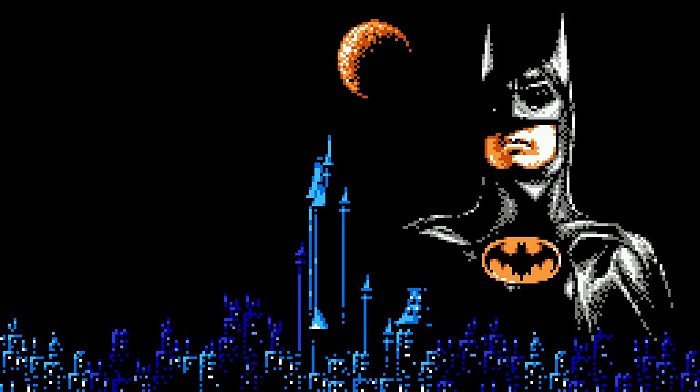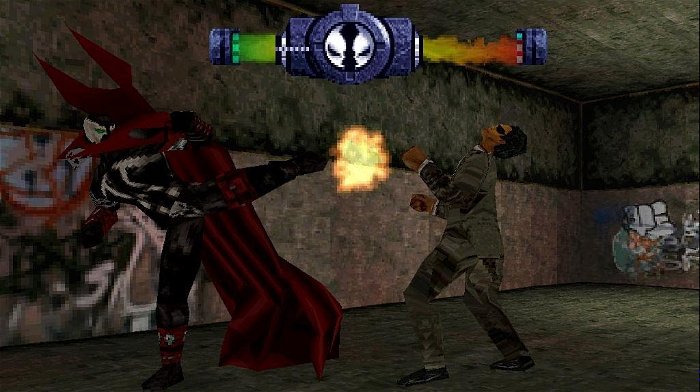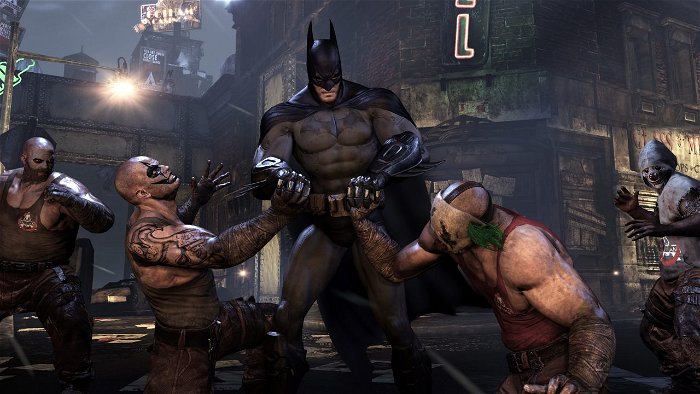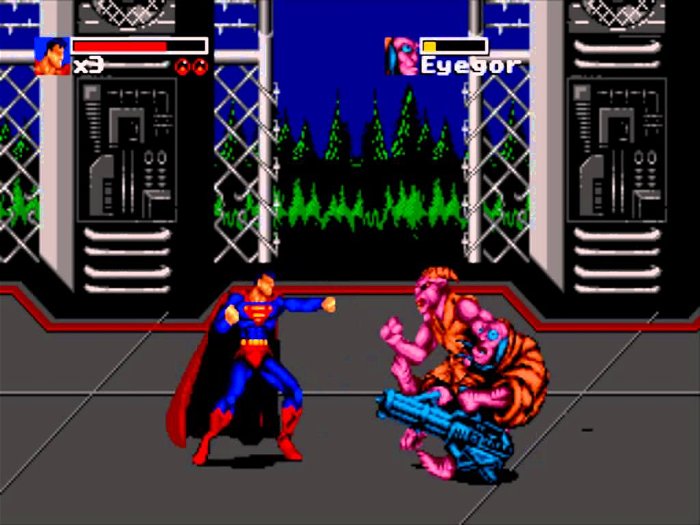Video games based on comic-book superheroes have been around for decades now. Though there were a handful released before the NES, they only gained prominence on Nintendo’s first-ever platform. But suffice it to say, for the most part, superhero games have been rather poor. Both developers and publishers have struggled to really capture the essence of Marvel’s and DC’s popular heroes, relegating their games to being little more than shovelware. However, there were moments where a studio really got it right, and when that happens, players have a fun and unforgettable game to play through.
The 1986 Batman game developed by Ocean Software was not only the first Batman game released, but it was also received well by the computer game press at the time. Most outlets gave the game at least a 9 out of 10. It was released on Amstrad PCW, and ZX Spectrum, and is a 3D isometric action-adventure game. But it wasn’t until developer Sunsoft’s 1989 Batman: The Video Game that superhero games started to gain prominence.

Unlike the original 1986 title, Sunsoft’s take on the Dark Knight was a retro 2D side-scroller reminiscent of classic Mario and Metroid games where Batman could wall jump like Ryu Hyabusa from Ninja Gaiden. It was released on Nintendo’s NES and was based on Tim Burton’s 1989 film of the same name. Though it did not review as well as its 1986 counterpart, it enjoyed a healthy critical reception, and it holds an aggregate score of 78.75% on GamerRankings. Chunsoft followed it up with a sequel, titled Batman: Return of the Joker, roughly 2 years later, which was largely an identical experience.
Throughout the 90s, there was a plethora of retro superhero games being released, and most of them sported the same type of aesthetic and gameplay mechanics alongside the rest of the early polygonal PlayStation and Nintendo 64 titles. Unfortunately, a lot of them were forgettable and poorly received. This includes The Flash, developed by Probe Entertainment and released on the Sega Master System in 1993, which remains an obscure European release to this day. This is largely because by 1993, the Master System was no longer being supported in Japan and the United States.
1995’s The Death and Return of Superman—another project by Sunsoft—was highly similar to the studio’s previous Batman games, which was rather strange. Superman is a demigod, and to simply beat up some thugs in hand-to-hand combat does not feel empowering enough as the Man of Steel. And of course, who can forget one of the most infamous games ever released, 1999’s Superman 64? The hype for that game was immense, as people were led to believe that they would finally be able to truly feel like Superman in a video game.
He’s able to fly in it, after all, right? Sure, but you’re forced to manoeuvre through strange green rings for some reason while doing so. Also, it’s all timed. The draw distance is laughable as well, even for an N64 title. The game contains 14 distinct levels divided into 2 categories: maze levels and ride levels. In the latter, the gameplay is set outdoors in Metropolis and alternates between flying Superman through those awful coloured rings, and completing timed objectives such as saving a civilian. In the former, Superman has to save one of his friends from Luther’s outposts and defeat an end-level boss. Suffice it to say, the game was a total disaster and is still a source of disappointment to this day.
Another similar poor title is 1997’s Spawn: The Eternal. Based on Todd McFarlane’s and Image Comics’ comic book series, the game was released on the PlayStation and many outlets complained about its poor controls, a camera which moves far too slow to keep up with the player, and buggy graphics. In contrast, Spider-Man is a character that has enjoyed a deluge of good video games over the years, at least until recently. The first couple of games, released on Nintendo 64 and PlayStation, are really fun to play and actually do make the player feel like Spidey himself.
The movie tie-ins that were released in the 2000s, especially Spider-Man 2, are the cream of the crop. Spider-Man 2 is still considered to be one of the best superhero games ever released outside of Rocksteady’s excellent Batman: Arkham series, but more on that later. Spider-Man 1 and 2 allowed players to travel around New York using Spider-Man’s web slingers, and the experience felt liberating. The blueprint was established, and though most of Spider-Man’s future games struggled to capture that same magic, they still aren’t anywhere near as disappointing as Superman 64.

Most of the 2000s contained a smorgasbord of licensed superhero games, as that was the first decade where Hollywood really bought into the comic book hype in earnest. There was Sega’s Iron Man game, EA’s Superman Returns, The Incredible Hulk, and so on. None of these games really delved into what makes these characters so beloved in the first place; what makes them so awesome. Instead you have experiences where playing as Iron Man himself feels like a total drag.
“Rocksteady’s Arkham trilogy and WB Montreal’s prequel Arkham Origins are arguably the best Batman—and indeed superhero—games ever made.”
However, what resulted was other companies taking characters and thrusting them into their own existing worlds. For example, Capcom’s excellent Marvel vs. Capcom fighting games were built on the foundation of Street Fighter, and Capcom expanded on those fighting mechanics by introducing a plethora of cool moves that Marvel characters can pull off. From 1996’s X-Men vs. Street Fighter, to 2011’s Marvel vs. Capcom 3, players have always been able to dish out intricate and fantastical fighting moves whilst playing as Spider-Man, Wolverine, Magneto, etc. The same goes for the Lego titles featuring Marvel or DC heroes, which put a comedic twist on those properties.
Finally, to end things on a high note, Rocksteady’s Arkham trilogy and WB Montreal’s prequel Arkham Origins are arguably the best Batman—and indeed superhero—games ever made. The first 2009 title, Arkham Asylum, was met with doubt and concern from fans when it was first announced. Rocksteady was still an unproven studio, and the numerous comic-to-videogame translations of years passed had left a foul taste in people’s mouths. Of course, that all changed when Arkham Asylum finally released. Not only was it a great Batman game, but it was one of the best games of the year.

Taking inspiration from the Metroidvania style, with regards to new gadgets being used to unlock new areas that Batman couldn’t previously access, the setting also had a character of its own in the form of The Riddler’s trophies and riddles spread throughout for players to discover. Batman’s impressive rogue gallery was also put to great use, as Rocksteady’s interpretation of The Joker, Harley Quinn, Poison Ivy, Bane, and many more felt equally refreshing and true to the characters people had grown to love. It also didn’t hurt that Batman: The Animated Series veterans like Mark Hamill and Kevin Conroy agreed to lend their talents to the franchise.
Arkham City, released in 2011, and the recently released Arkham Knight maintain that excellent quality that Asylum introduced. The only difference being the open-world settings that Rocksteady opted to build: Arkham City in, well, Arkham City and the larger Gotham City in Arkham Knight. WB Montreal’s Arkham Origins is also great, but of course, it isn’t quite up to snuff with Rocksteady’s impeccable trilogy.
Rumours have been swirling around that WB Montreal might be making a Superman game, and boy does it have its work cut out. Of course, Arkham Knight also contains a ton of easter eggs to not only Superman, but the rest of the Justice League, indicating that Rocksteady might just be building its own DC videogame empire. Certainly, it will continue to provide the blueprint for how to properly translate superheroes into videogames, and studios should take note, because frankly, players don’t need another Superman 64.






